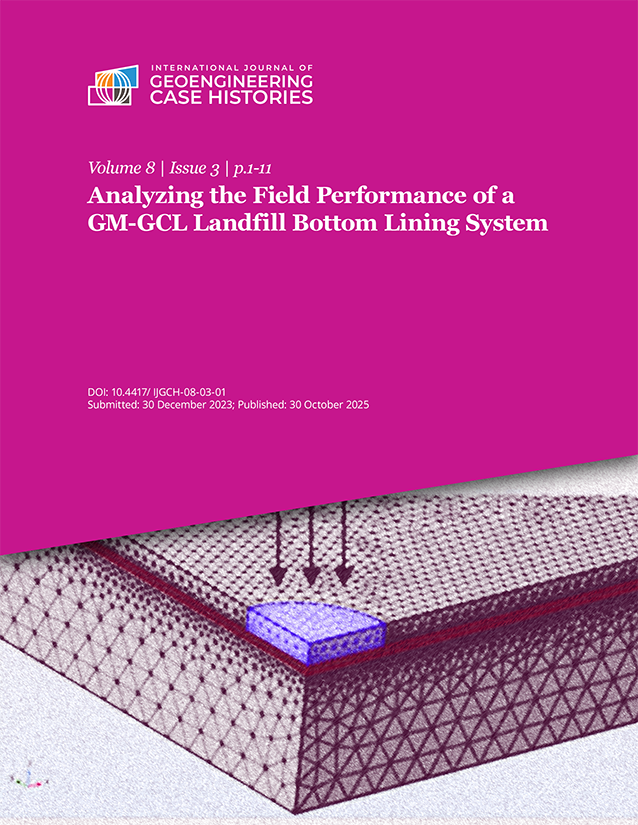Analyzing the Field Performance of a GM-GCL Landfill Bottom Lining System

Volume 8 – Issue 3
Authors: Leslie Okine ; Poyu Zhang ; Tarek Abichou ; Jiannan Chen
Keywords
landfill bottom liners, geomembranes, geosynthetic clay liners, field leakage, numerical model
Abstract
With the increase in the use of geomembrane-geosynthetic clay liners (GM-GCL) in landfill barrier systems, extensive research has been conducted on the leakage rate across GM-GCL systems using analytical solutions, empirical equations, and numerical methods. On the other hand, research on comparing the field performance of GM-GCL composite lining system to prediction methods is limited. The objectives of this study were to assess the field-collected leakage rate across a GM-GCL landfill bottom lining system, to analyze its performance against the leakage estimation equations, and to provide an explanation regarding the volume of liquids pumped from the leakage detection system (LDS) using theoretical equations and numerical modelling. The liquids pumped from the leakage detection system of a landfill lined with a GM-GCL double composite system analyzed in this study were relatively high when compared to the results of theoretical equations used in estimating leakage rate. Results of the analysis performed using theoretical equations and numerical modelling indicate that eighty-eight to ninety-eight percent of the liquids pumped from the LDS was as a result of groundwater intrusion from outside of the landfill. Specifically, there is an upward movement of groundwater into the leakage detection system due to the inward hydraulic gradient nature of the landfill.




